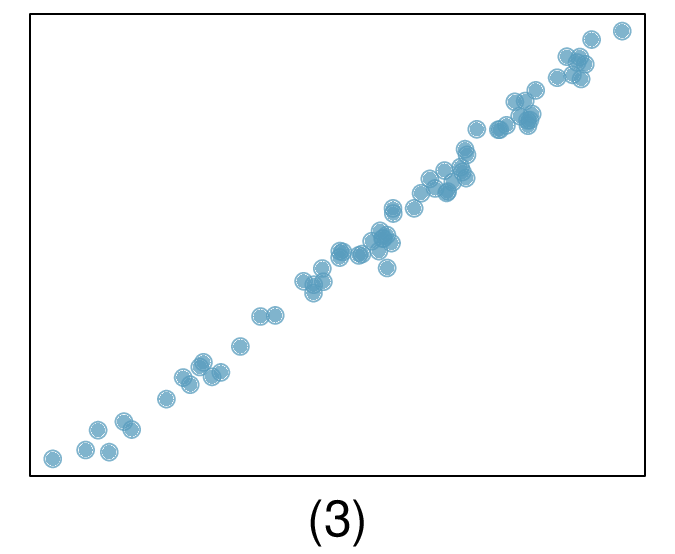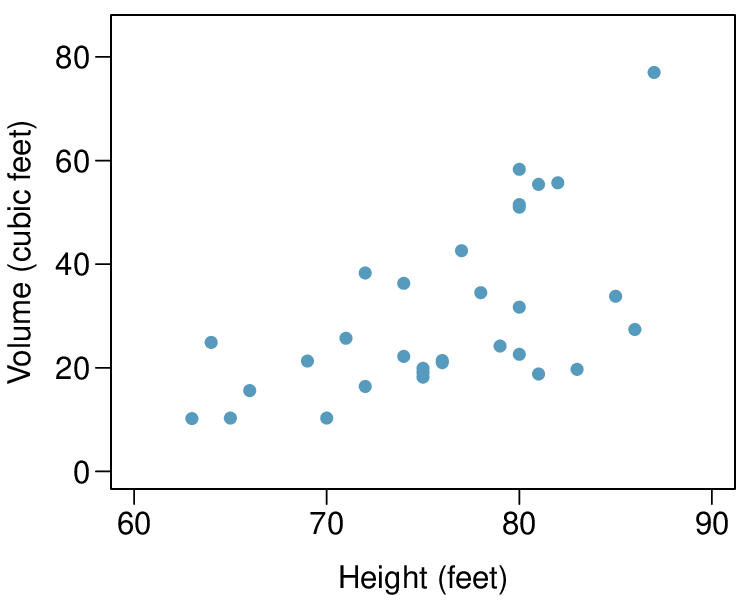1. True / False.
Determine if the following statements are true or false. If false, explain why.
- A correlation coefficient of -0.90 indicates a stronger linear relationship than a correlation of 0.5.
- Correlation is a measure of the association between any two variables.
Solution.
- True.
- False, correlation is a measure of the linear association between any two numerical variables.












